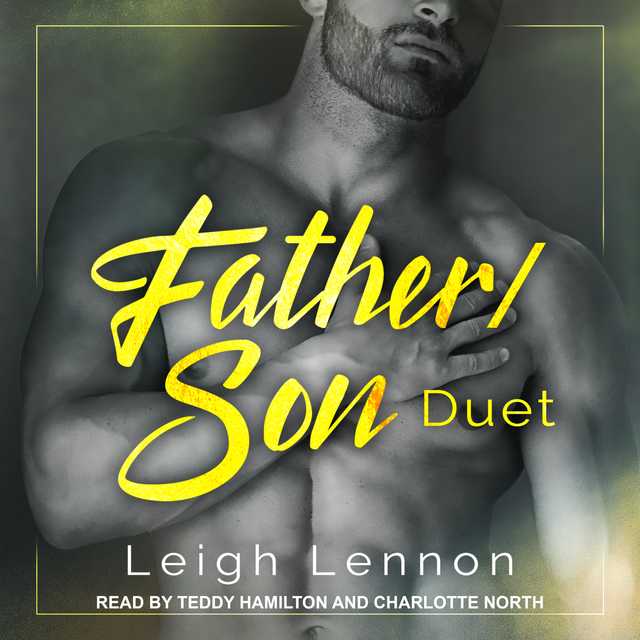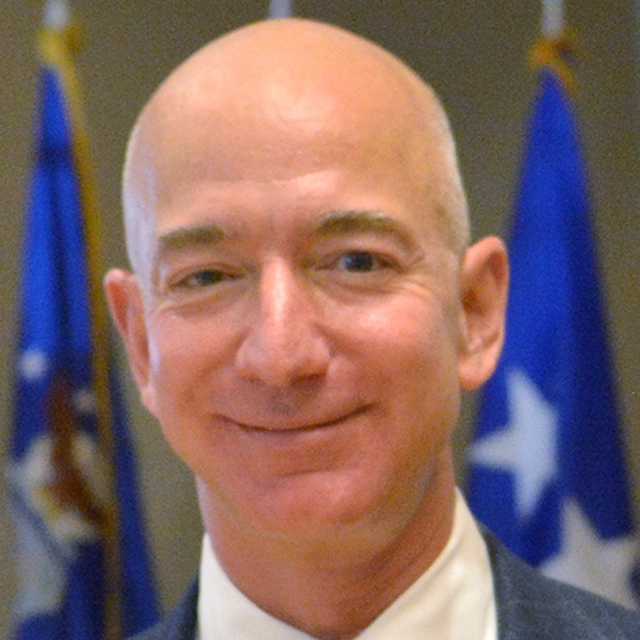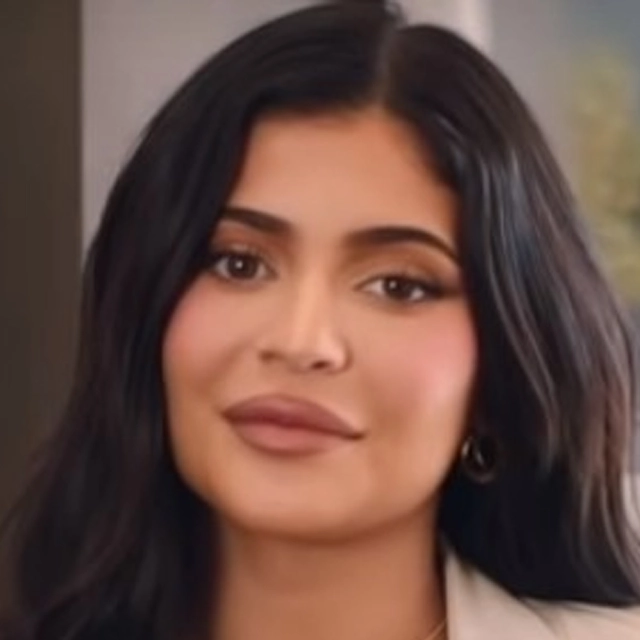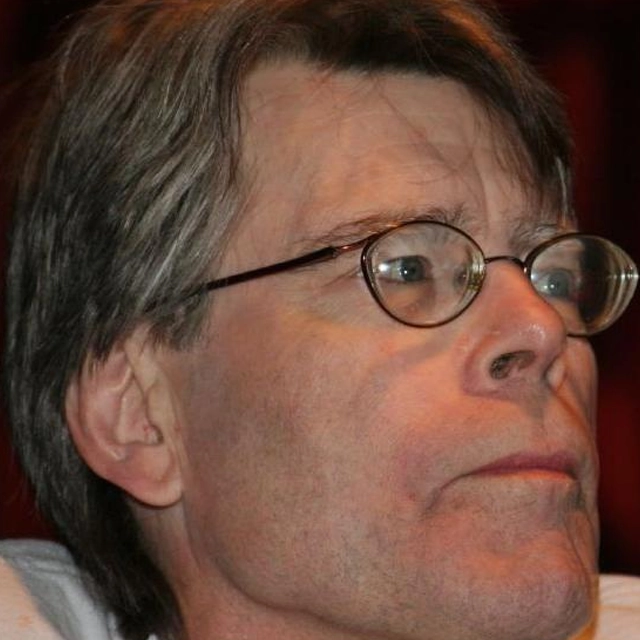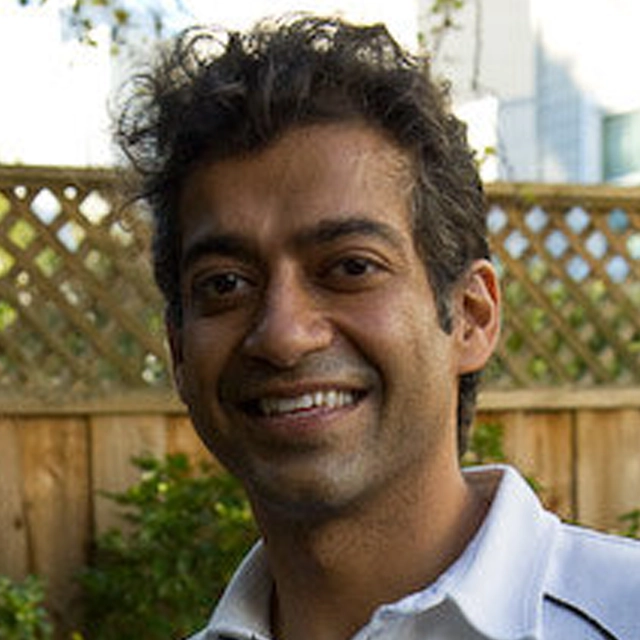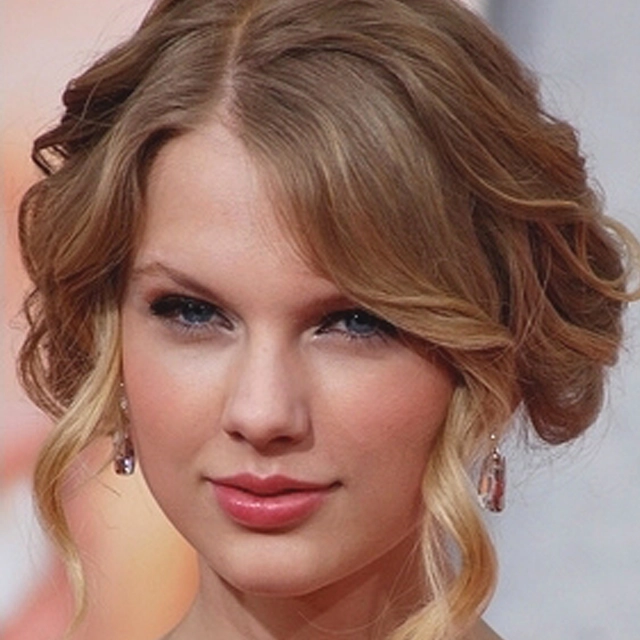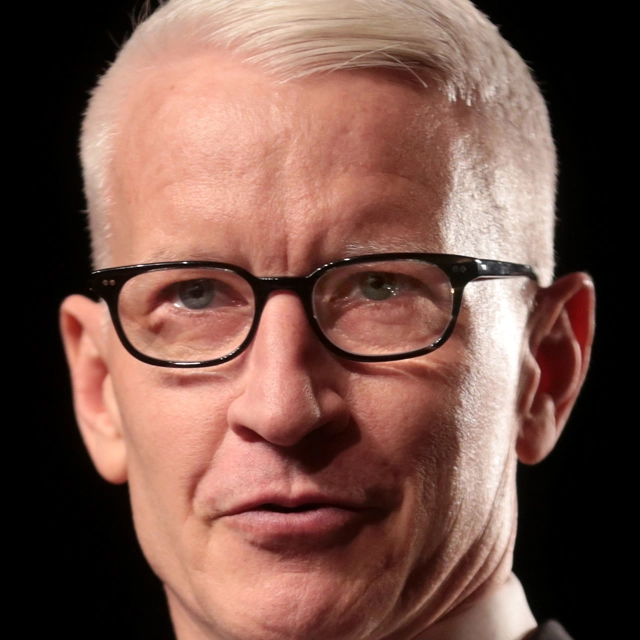Recommended by 1 experts
All the Light We Cannot See Audiobook Summary
Winner of the 2015 Audie Award for Fiction
* SOON TO BE A NETFLIX LIMITED SERIES–from the producer and director of Stranger Things starring Mark Ruffalo, Hugh Laurie, and newcomer Aria Mia Loberti*
*Winner of the Pulitzer Prize* National Book Award Finalist* A New York Times Book Review Top 10 Book* A New York Times Bestseller *
The beloved, “incandescent…luminous” (Oprah Daily) instant New York Times bestseller about a blind French girl and a German boy whose paths collide in occupied France as both try to survive the devastation of World War II.
Marie-Laure lives with her father in Paris near the Museum of Natural History where he works as the master of its thousands of locks. When she is six, Marie-Laure goes blind, and her father builds a perfect miniature of their neighborhood so she can memorize it by touch and navigate her way home. When she is twelve, the Nazis occupy Paris, and father and daughter flee to the walled citadel of Saint-Malo, where Marie-Laure’s reclusive great uncle lives in a tall house by the sea. With them they carry what might be the museum’s most valuable and dangerous jewel.
In a mining town in Germany, the orphan Werner grows up with his younger sister, enchanted by a crude radio they find. Werner becomes an expert at building and fixing these crucial new instruments, a talent that wins him a place at a brutal academy for Hitler Youth, then a special assignment to track the Resistance. More and more aware of the human cost of his intelligence, Werner travels through the heart of the war and, finally, into Saint-Malo, where his story and Marie-Laure’s converge.
Doerr’s “stunning sense of physical detail and gorgeous metaphors” (San Francisco Chronicle) are dazzling. Deftly interweaving the lives of Marie-Laure and Werner, he illuminates the ways, against all odds, people try to be good to one another. Ten years in the writing, All the Light We Cannot See is a magnificent, deeply moving novel from a writer “whose sentences never fail to thrill” (Los Angeles Times).
Other Top Audiobooks
All the Light We Cannot See Audiobook Narrator
Zach Appelman is the narrator of All the Light We Cannot See audiobook that was written by Anthony Doerr
Anthony Doerr is the author of the New York Times bestselling Cloud Cuckoo Land, which was a finalist for the National Book Award, and All the Light We Cannot See, winner of the Pulitzer Prize, the Carnegie Medal, the Alex Award, and a #1 New York Times bestseller. He is also the author of the story collections Memory Wall and The Shell Collector, the novel About Grace, and the memoir Four Seasons in Rome. He has won five O. Henry Prizes, the Rome Prize, the New York Public Library’s Young Lions Award, the National Magazine Award for fiction, a Guggenheim Fellowship, and the Story Prize. Born and raised in Cleveland, Ohio, Doerr lives in Boise, Idaho, with his wife and two sons.
About the Author(s) of All the Light We Cannot See
Anthony Doerr is the author of All the Light We Cannot See
More From the Same
- Author : Anthony Doerr
- Cloud Cuckoo Land
- About Grace
- The Best American Short Stories 2019
- Four Seasons in Rome
- Publisher : Simon & Schuster Audio
- The Fourth Mega Market
- Nothing Like it In The World
- Fatal Voyage
- The Good German
- The Victors
All the Light We Cannot See Full Details
| Narrator | Zach Appelman |
| Length | 16 hours 2 minutes |
| Author | Anthony Doerr |
| Category | |
| Publisher | Simon & Schuster Audio |
| Release date | April 27, 2024 |
| ISBN | 9781442369375 |
Additional info
The publisher of the All the Light We Cannot See is Simon & Schuster Audio. The imprint is Simon & Schuster Audio. It is supplied by Simon & Schuster Audio. The ISBN-13 is 9781442369375.
Global Availability
This book is only available in the United States.
All the Light We Cannot See is recommended by
Goodreads Reviews
Will
November 09, 2022
4/20/15 - PULITZER WINNER for 2014 The brain is locked in total darkness of course, children, says the voice. It floats in a clear liquid inside the skull, never in the light. And yet the world it constructs in the mind is full of light. It brims with color and movement. So how, children, does the brain, which lives without a spark of light, build for us a world full of light? Marie Laure LeBlanc is a teen who had gone blind at age 6. She and her father, Daniel, fled Paris ahead of the German invasion, arriving in the ancient walled port city of Saint Malo in northwest France to stay with M-L’s great uncle, Etienne. His PTSD from WW I had kept him indoors for two decades. They bring with them a large and infamous diamond, to save it from the Nazis. Daniel had made a scale model of their neighborhood in Paris to help young Marie Laure learn her away around, and repeats the project in Saint Malo, which is eventually occupied by the German army. Werner and Jutta Pfennig are raised in a German orphanage after their father is killed in the local mine. Werner has a gift for electronics, and is sent to a special school where, despite the many horrors of the experience, his talent is nurtured. He develops technology for locating radio sources, and is rushed into the Wehrmacht to apply his skill in the war. His assignment brings him to Saint Malo, where his path and Marie Laure’s intersect. Anthony Doerr There are three primary time streams here, 1944 as the Allies are assaulting the German-held town, 1940-44, as we follow the progress of Werner and Marie Laure to their intersection, and the 1930s. We see the boy and the girl as children, and are presented with mirrored events in their young lives that will define in large measure the years to follow. Werner and Jutta are mesmerized by a French radio broadcast, a respite from the anti-Semitic propaganda the government is broadcasting. The Professor in the French broadcast offers lectures on science, and inspires Werner to dream of a life beyond the orphanage. Open your eyes, concluded the man, and see what you can with them before they close forever, and then a piano comes on, playing a lonely song that sounds to Werner like a golden boat traveling a dark river, a progression of harmonies that transfigures Zollverein: the houses turned to mist, the mines filled in, the smokestacks fallen, an ancient sea spilling through the streets, and the air streaming with possibility. As her father is the head locksmith for the National Museum of Natural History in Paris, Marie Laure has the run of the place. She spends a lot of time with a professor there, learning everything she can about shells, mollusks and snails. Dr. Geffard teaches her the names of shells--Lambis lambis, Cypraea moneta, Lophiotoma acuta--and lets her feel the spines and apertures and whorls of each in turn. He explains the branches of marine evolution and the sequences of the geologic periods; on her best days, she glimpses the limitless span of millennia behind her: millions of years, tens of millions of years. Both Werner and Marie Laure are enriched by teachers and books as they grow. No nuclear families here. Marie Laure’s mother died in childbirth. The Pfennig children lost their remaining parent when father was killed in the mine. The author, in a video on his site, talks about the three pieces of inspiration that provided the superstructure for the novel. While 80 feet below ground in a NYC subway, a fellow passenger was griping about the loss of cell service. Doerr appreciates the beautiful miracle that is modern communications. At the start of the book I wanted to try to capture the magic of hearing the voice of a stranger in a little device in your home because for the history of humanity, that was a strange thing. I started with a boy trapped somewhere and a girl reading a story. A year later he was on a book tour in France and saw Saint Malo for the first time. Walking around this beautiful seaside town, a walled fortress, the beautiful channel, the green water of the channel breaking against the walls and I told my editor, “look how old this is. This medieval town’s so pretty.” He said, “actually, this town was almost entirely destroyed in 1944, by your country, by American bombs.” So I started researching a lot about the city of Saint Malo immediately and knew that was the setting. That was where the boy would be trapped, listening to the radio. The third piece arrived when Doerr learned that when the Germans invaded, the French hid not only their artistic treasures but their important natural history and gemological holdings as well.The story is told primarily in alternating Marie Laure’s and Werner’s experiences. But there is a third stream as well, that of Sgt Major Reinhold von Rumpel, a gem appraiser drafted by the Reich to examine the jewels captured by the military and collect the best for a special collection. He becomes obsessed with finding the Sea of Flames, the near mythic diamond Daniel LeBlanc had hidden away. He is pretty much the prototypical evil Nazi, completely corrupt, greedy, cruel, as close to a stick-figure characterization as there is in the book. But his evil-doing provides the danger needed to move the story forward. There may not be words sufficient to exclaim just how magnificent an accomplishment this book is. Amazing, spectacular, incredible, moving, engaging, emotional, gripping, celestial, soulful, and bloody fracking brilliant might give some indication. There is so much going on here. One can read it for the story alone and come away satisfied. But there is such amazing craft on display that the book rewards a closer reading. In addition to a deft application of mirroring in the experiences of Werner and Marie Laure, Doerr brings a poet’s sense of imagery and magic. Marie-Laure’s sense of the world is filled with shell, snail, and mollusk experiences and references. Some are simple. During a time of intense stress, she must live like the snails, moment to moment, centimeter to centimeter. In a moment of hopeful reflection, these tiny wet beings straining calcium from the water and spinning it into polished dreams on their backs—it is enough. More than enough. You will find many more scattered about like you-know-what on a beach. I knew early on that I wanted her to be interested in shells. I'm standing here at the ocean right now. I've always been so interested in both the visual beauty of mollusks and the tactile feel of them. As a kid, I collected them all the time. That really imbued both "The Shell Collector" and Marie with, Why does the natural world bother to be so beautiful? For me, that's really embodied in seashells. I knew early on that I wanted her to find a path to pursue her interest in shells. I think that fits — I hope that fits — with visual impairment, using your fingers to identify them and admire them. - from the Powell’s reviewWerner’s snowy white hair alone might stand in for the entirety of the visible spectrum. (although it is described as “a color that is the absence of color.”) The dreaded prospect of being forced to work in the mines in a literally coal-black environment, the very antithesis of light, offers motivation for Werner to find another path, and coal itself offers a balance for that other form of carbon that drives Marie Laure’s father out of Paris, the one that embodies light. While black and white are often used in describing Werner’s environment, the broader spectrum figures large in his descriptions. Werner liked to crouch in his dormer and imagine radio waves like mile-long harp strings, bending and vibrating over Zollverein, flying through forests, through cities, through walls. At midnight he and Jutta prowl the ionosphere, searching for that lavish, penetrating voice. When they find it, Werner feels as if he has been launched into a different existence, a secret place where great discoveries are possible, where an orphan from a coal town can solve some vital mystery hidden in the physical world. A nice additional touch is Marie Laure’s reading of 20,000 Leagues Under the Sea. It permeates the tale as her reading echoes events and tensions in the real world of the story. Also avian imagery is a frequent, soulful presence. A particularly moving moment is when a damaged character is reminded of a long-lost friend (or maybe a long-remembered fear?) by the presence of a particular bird associated with that friend and the time when they knew each other.There are substantive issues addressed in this National Book Award finalist. Moral choices must be made about how to respond when darkness seeks to extinguish the light. There are powerful instances in which different characters withdraw into their shells in response to evil, but others in which they rage against the night with their actions. Thoughtful characters question the morality of their actions, as dark-siders plunge into the moral abyss. Sometimes the plunge is steep and immediate, but for others it is made clear that innocence can be corrupted, bit by bit. The major characters, and a few of the secondary ones, are very well drawn. You will most definitely care what happens to them.As for gripes, few and far between. There is a tendency at times to tell rather than show. Marie Laure may be too good. That’s about it. There are sure to be some who find this story too emotional. I am not among them.Just as Werner perceives or imagines he perceives an invisible world of radiowaves, All the Light We Cannot See enriches the reader with a spectrum of imagery, of meaning, of feeling. You may need eyes to read the page, ears to hear if listening to an audio version, or sensitive, educated fingers to read a Braille volume (please tell me this book has been published in Braille), but the waves with which Doerr has constructed his masterwork will permeate your reading experience. They may not be entirely apparent to your senses the first time you read this book. They are there. Whether you see, hear or touch them, or miss them entirely, they are there, and they will fill you. All the Light We Cannot See is a dazzling novel. When you read it, you will see. =============================EXTRA STUFFLinks to the author’s personal, and FB pagesMy review of Doerr's 2021 masterpiece, Cloud Cuckoo LandDefinitely check out Doerr’s site. And if you are wondering what he had in mind, specifically, with the title: It’s a reference first and foremost to all the light we literally cannot see: that is, the wavelengths of the electromagnetic spectrum that are beyond the ability of human eyes to detect (radio waves, of course, being the most relevant). It’s also a metaphorical suggestion that there are countless invisible stories still buried within World War II — that stories of ordinary children, for example, are a kind of light we do not typically see. Ultimately, the title is intended as a suggestion that we spend too much time focused on only a small slice of the spectrum of possibility. - from Doerr’s siteInterview by Jill Owens for Powell’sTwenty Thousand Leagues Under the Sea for free on Project GutenbergHere’s the wiki page for Saint MaloAn interesting article on the damage done to Saint Malo in the 1944 battleA page on the surrender of Saint Malo, from the site World War II Today Here is a nice, large panoramic shot of modern Saint Malo, far too wide to include hereDoerr adds a lot to our understanding of the book with his Notes and Highlights commentary here on GR4/20/15 - Pulitzer prize winners were announced today, and All the Light shines brightest for fiction6/27/15 - All the Light We Cannot See is awarded the Andrew Carnegie Medal for Excellence in FictionNovember 2018 = All the Light is among the semi-finalists for GR's Best of the Best AwardJanuary, 2022- Netflix announces that All the Light is being made into a four-part series, starring Mark Ruffalo and Hugh Laurie.
Jim
March 07, 2017
This is a great book. Its very high ratings (4.3; half of the ratings are "5's") renews my faith that GR ratings count for something. With almost 50,000 reviews on GR I don’t feel there is a lot for me to add but here’s a brief summary of the plot and I’ll give a few examples of the great literary writing.It’s just before the Nazi invasion and occupation of Paris. A young blind girl relies on her father for everything and she is his world as well. He spends all his time making her a wooden model of the city so she can get around alone with her white cane. In neighboring Germany, a young boy, who lives with his sister in an orphanage, starts fooling with crystal radios and becomes a crackerjack radio repairman enthralled by these voices coming over the air. Her blindness and his fascination with these invisible waves give us a main theme of the book. “How he wishes he had eyes to see the ultraviolet, eyes to see the infrared, eyes to see the radio waves crowding the darkening sky.” “Open your eyes and see what you can with them before they close forever.” And late in the novel, her great uncle says to the blind girl, “We’ll go to Paris…I’ve never been. You can show it to me.”The chapters of the book jump around in time -- 1934, 1944, 1940 -- so we know on occasion, for example, how a soldier will die even before the main character meets him. We have the brutal story of the boy’s education at a military school; the chaotic flight of the girl and her father from occupied Paris to distant relatives in St. Malo in Brittany; the military escapades of the boy as he works with a German unit identifying and killing resistance radio operators; the imprisonment of the girl’s father; the search for a missing jewel (because her father had been the locksmith at the natural history museum); the formation of a women’s resistance movement in St. Malo; a budding one-day romance between the French girl and the German boy. Letters from his sister back in Germany become the boy’s conscience after he enters military service. Some of the beautiful writing:“…leafless trees stand atop slag heaps like skeleton hands shoved up from the underworld.”“Marie-Laure looks up from her book and believes she can smell gasoline under the winds. As if a great river of machinery is streaming slowly, irrevocably, toward her.”“And yet everything radiates tension, as if the city has been built upon the skin of a balloon and someone is inflating it toward the breaking point.” “His voice is low and soft, a piece of silk you might keep in a drawer and pull out only on rare occasions, just to feel it between your fingers.”[Of the occupying German soldiers, mostly boys] “Claude understands that he ought to resent them, but he admires their competence and manners, the clean efficiency with which they move. They always seem to be going somewhere and never doubt that it is the right place to be going. Something his own country has lacked.”Of a group of women visiting: “They smell of stale bread, of stuffy living rooms crammed with dark titanic Breton furnishings.”“Behind her, an over decorated flat reeks of dead apple blossoms, confusion, old age.”A great book. I wish I had read it years ago. Photo of Paris sunset from nyhabitat.com/blogPhoto of St. Malo from europeupclose.com
Emily May
April 16, 2016
“So how, children, does the brain, which lives without a spark of light, build for us a world full of light?” I'm going to be honest - love for this book didn't hit me straight away. In fact, my first attempt to read it last year ended with me putting it aside and going to find something easier, lighter and less descriptive to read. I know - meh, what a quitter.But this book is built on beautiful imagery. Both in the literal sense - the physical world of 1940s Paris/Germany - and the metaphorical. It's woven with scientific and philosophical references to light, to seeing and not seeing, and the differences between the two. It's a beautiful work of genius, but it does get a little dense at times; the prose bloated by details.However, when we get into the meat of this WWII novel, it's also the harrowing story of a childhood torn apart by war. It's about Parisian Marie-Laure who has been blind since she was six years old, and a German orphan called Werner who finds himself at the centre of the Hitler Youth. Both of their stories are told with sensitivity and sympathy, each one forced down a path by their personal circumstances and by that destructive monster - war.I think this is the kind of book you will never appreciate if you stop too soon - I learned that lesson. From the first to last page, there is a running theme of interconnectedness, of invisible lines running parallel to one another and sometimes, just sometimes, crossing in the strangest of ways. These two lives we are introduced to seem to be worlds apart, and yet they come together and influence one another. It was this, more than the predictably awful tale of war, that made me feel quite emotional.All the Light We Cannot See is haunting. That's how I would describe it. From the chillingly beautiful prose, to the realization of what the title actually means: that underneath the surface of history, there is light - and stories - that have not been seen; that have gone untold. Scientifically, we only see a small portion of the electromagnetic spectrum; historically, we only see a small portion of the story.Blog | Facebook | Twitter | Instagram | Youtube | Store
Rick
July 24, 2015
Adult fictionThis book is getting a lot of well-deserved attention for its unique story and its beautiful writing. It starts late in World War II, as the Allies begin shelling the French city of Saint-Malo to drive out the remaining Nazi troops. Our two main characters are Marie Laure, a blind French girl who fled here with her uncle from Paris, and Werner, a radio expert in the German army who is stuck in the city when the attack begins. We jump back and forth in time, and between the two characters’ perspectives to see how both young people were brought to this place.If you like straight-ahead, linear, plot-driven war novels, this is not the book for you. It does have a central plot that brings the two characters together – a mystery about a possibly magic gem hunted by an evil, terminally ill Nazi officer – but that is almost beside the point. In fact it feels like something added after the fact, as if an editor said, “You know, what you need is . . .” That plot, and the way it resolves, strongly echoes the mystery in the movie Titanic.What kept me turning pages, rather, were the characters’ lives and the short, well-crafted scenes. Doerr’s writing is elegant and evocative. Reading it is like eating the best gelato – so decadent you are sure you’ll put on weight. He treats Marie Laure and Werner with equal empathy, and their interaction – when they finally meet – is not your stereotypical wartime love story. It is much better, much more bittersweet and haunting.It took me about fifty pages to really get into the book and figure out the structure, but once I did, I couldn’t stop.
Lisa of Troy
November 24, 2022
Anthoy Doerr’s All The Light We Cannot See lives up to the hype! This historical fiction novel is set in World War II and alternates between two main characters, a teenage boy named Werner Pfennig and a blind teenage girl named Marie-Laure.Don’t be the last one to the party on this book! Netflix is planning on creating a four-part limited series based on this book, and I can’t wait to see what they come up with. Hugh Laurie is set to play the role of Marie-Laure's great uncle!This is my second Anthony Doerr book, and it didn’t disappoint. The other novel that I read was Cloud Cuckoo Land. All the Light We Cannot See is much more straightforward in my opinion and is much easier to follow. Although All the Light We Cannot see is a rather lengthy novel, the short paragraphs and chapters keep the action flowing.When reading this book, I practiced immersion reading with a free copy of the text through Libby, a free service provided by my local library and a copy of the audiobook procured through Scribd. I love immersion reading!!!!!We meet Werner Pfennig. He is an orphan, living in Germany, who awaits the passage of time where he dreads the day he will start to work in the very same mine that killed his father. However, Werner makes a name for himself working on radios. Will Werner’s skills be his ticket out of the orphanage? What will Werner do with these skills? And how will his path intersect with Marie-Laure?Although Marie-Laure is originally born with sight, she eventually loses her ability to see. Her father helps her to regain her independence by crafting a replica of the city. However, Paris is at risk for attack, and Marie-Laure and her father flee to Saint-Malo where her great-uncle lives. Her great-uncle is 63, suffering from PTSD, and never leaves the house. How will All The Light We Cannot See end for Marie-Laure, her father, and her great-uncle? This book has some really great character development. The characters are not all good nor all bad. Some of the characters struggle with decisions that they have made, questioning what they should have done differently. Additionally, there are two disabled people in this book. They are important characters (not side characters), and they are doing important work. Not all heroes carry swords or have ninja moves. Overall, All The Light We Cannot See is a captivating read, one I look forward to reading again. Need more bookish thoughts? Check out Lisa of Troy's homepage!2023 Reading ScheduleJan Alice in WonderlandFeb Notes from a Small IslandMar Cloud AtlasApr On the RoadMay The Color PurpleJun Bleak HouseJul Bridget Jones’s DiaryAug Anna KareninaSep The Secret HistoryOct Brave New WorldNov A Confederacy of DuncesDec The Count of Monte CristoConnect With Me!Blog Twitter BookTube Facebook Insta
Cindy
December 23, 2018
Bumped this up to 5 stars because the last 100 pages made me cry like a little bitch. Both the main characters are likable, inquisitive, and sympathetic; the side characters are also endearing and wonderful companions. The writing style and imagery is poetic without veering towards purple prose; I was impressed by Doerr's ability to weave words together in such a lovely and rich way, especially from the perspective of a blind character. The themes throughout the story — how war can rob the normalcy of childhoods, how the main characters remain inquisitive about the wonders of the world despite it all — is so touching that I cried at both the sad parts and the simple pleasures that these characters got to enjoy. My only caveat is that the book can be quite slow, with only significant events happening every hundred pages or so. This is due to Doerr literally going through the characters’ entire lives from childhood to adulthood and representing the (often times mundane) moments passing by. It’s a double-edged sword, because the slice-of-life approach helps create realism and attachment as we watch the characters grow, but the downside is that it can be boring at times. I also wish we got to see interactions between Marie-Laure and Werner — they barely had any moments together, and while I acknowledge their relationship isn’t the point of the book, I think it would have enriched the story even more (and would have turned me into putty) because they connected so well in the small time they were together. Nonetheless, the story is still tragically beautiful.
Emily
October 09, 2019
Did I just... finish a book?The audiobook was definitely the way to go with this one! Very popular historical fiction. Out of my comfort zone. I get the hype, the writing was beautiful but not a favorite!
Angela M
May 25, 2014
What I loved most about this book was all the light that I did see. There is so much here that captivated me - from the beautiful writing to the strong, caring characters to the loving relationships and the way people touched each other's lives during the trying times of WW II.Parallel stories are told in alternating chapters of Marie Laure, a teenage French girl who has been blind since the age of six and Werner, an intelligent, perceptive and sensitive German orphan who learns to fix radios and becomes noticed by the German army. Each of their stories will move you in their own right, but especially when their paths cross.Through the lovely descriptive language we know that Marie Laure sees what she cannot see because he father lovingly carves a model of the neighborhood so she can tell where buildings and streets are and she knows by the number of steps and which way to turn. This loving, nurturing and often times touching relationship between Marie Laure and her fathers will melt your heart. He teaches her Braille, buys her books in Braille and gives her lovely little surprise boxes opened by solving a puzzle or trick opening to discover the hidden gift . Werner and his orphan sister Jutta have a special relationship , as well, and the letters they exchange are at once heartbreaking an heartwarming, even though it appears that Jutta has a hard time forgiving Werner for what he does to the radio.Doerr has created and developed characters that you care about as soon as you meet them. I loved “The Old Ladies Resistance Club”, led by Madame Manec, housekeeper, friend and caretaker to Ettiene , Marie's great uncle. The relationships that develop between Madame Manec and Marie Laure and between Uncle Ettiene and Marie Laure are nothing short of beautiful. The role that these people, including Marie Laure, play in the resistance is so courageous.Some bad things and some very sad things happened but after all this was war. But I loved the connections of people in the end and the ultimately uplifting feeling of hope - another light in this book .I highly recommend it .
Ahmad
August 04, 2021
All the Light We Cannot See, Anthony DoerrAll the Light We Cannot See is a novel written by American author Anthony Doerr, published by Scribner on May 6, 2014. It won the 2015 Pulitzer Prize for Fiction and the 2015 Andrew Carnegie Medal for Excellence in Fiction.In 1934, Marie-Laure LeBlanc is a six year old blind girl living in Paris with her father, the master locksmith at the Museum of Natural History. Her father constructs a scale model of their neighborhood to help her visualize her surroundings.In Germany, 8-year-old Werner Pfennig is an orphan in the coal-mining town of Zollverein. Werner is exceptionally bright and has a natural skill for repairing radios. After he finds a broken one with his younger sister Jutta, he fixes it and he uses it to hear science and music programs transmitted across Europe. ...تاریخ نخستین خوانش: روز بیست و دوم ماه نوامبر سال 2016 میلادیعنوان: نوری که نمیتوانیم ببینیم؛ نویسنده: آنتونی دوئر (دائر)؛ مترجم: روح الله صادقی؛ ویراستار اصغر اندرودی؛ کرج در دانش بهمن؛ 1394؛ در 574ص؛ شابک 9789641741763؛ موضوع: داستانهای نویسندگان ایالات متحده آمریکا - سده 20مکتاب برنده جایزه «پولیتزر» است؛ «ماری-لور» همراه پدر خویش در «پاریس»، نزدیک موزه ی «تاریخ طبیعی»، که پدرش در آنجا به عنوان استاد کلیدساز، مسئول هزاران قفل موجود در موزه است، زندگی میکند؛ «ماری» در شش سالگی، بینایی اش را از دست میدهد، و پدرش ماکت بی نقصی از محله شان میسازد، تا او، با لمس ماکت، محله را به خاطر بسپارد، و بتواند خود مسیر خانه را پیدا کند؛ هنگامی که «پاریس» به اشغال ارتش «نازیها» درمیآید، پدر و دختر به استحکامات شهر «سنت-مالو» میگریزند؛ آنها با خودشان قطعه ای را حمل میکنند، که ممکن است با ارزشترین و خطرناکترین جواهر موزه باشد؛ در شهری معدنی در «آلمان»، پسری یتیم به نام «ورنر» همراه با خواهر کوچکترش رشد میکند، و مسحور رادیوی خرابی میشود که آن را پیدا کرده است؛ استعداد او در ساخت و تعمیر این ابزار حیاتی جدید، برای او جایگاهی در آکادمی جوانان «هیتلر»، به ارمغان میآورد، و سپس مأموریت ویژه ای برای ردیابی نیروهای مقاومت، به او محول میشود؛ این مأموریت او را به «سنت-مالو» هدایت میکند، جایی که داستان او و «ماری» تلاقی پیدا میکنند؛تاریخ بهنگام رسانی 03/06/1399هجری خورشیدی؛ 13/05/1400هجری خورشیدی؛ ا. شربیانی
jessica
November 16, 2018
‘open your eyes and see what you can with them before they close forever.’ reading this story reminded me of eating a decadent chocolate cake - so rich and filling that you are only able to eat a couple of bites at a time. meaning this book took me sooo long to finish because there was just so much to savour, so much to appreciate.had this been any other book, i might have complained that it was too slow paced, too dense, too tedious. but i didnt think any of that with this story, regardless of how long it took me to reach the final page. because by the end, i discovered how rewarding all that effort really was. such a beautiful and heartbreaking story and one every person should read. ↠ 4.5 stars
Charlotte
February 22, 2017
Haunting, harrowing, heartbreaking. This book was an incredible depiction of the Second World War, told from the point of view of two characters in very different circumstances. Switching between narratives following Marie-Laure, a young blind girl living in France with her father, a museum caretaker. Forced to flee Paris, Marie Laure's father carries the real one of 4 copies made of the legendary 'sea of flames' a jewel said to bring bad luck and destruction on whoever holds it. The second narrative is Werner, a young German boy recruited into the Hitler youth and used for his exceptional intelligence with wireless and technology. Their stories run parallel, the prose is wonderful and enchanting giving real insight into the terror of war and the effects it had on the lives of such different people. Without using characters who were soldiers which gave this novel a different edge. The two characters eventually meet briefly and beautifully near the end, and to follow their stories and the stories of those around them was both heart warming and heart wrenching. Absolutely incredible. 5 stars.
Hannah
September 01, 2016
4.5 Stars"Open your eyes and see what you can with them before they close forever."This is the type of book that I'm not going to be able to stop thinking about for months. Needless to say, I absolutely love it. The writing is vivid and whimsical, every single character is fleshed out and essential to the story, and the plot is absolutely heartbreaking in the best way possible. I want to go back to the beginning and read it all over again.
Most Popular Audiobooks
Frequently asked questions
Listening to audiobooks not only easy, it is also very convenient. You can listen to audiobooks on almost every device. From your laptop to your smart phone or even a smart speaker like Apple HomePod or even Alexa. Here’s how you can get started listening to audiobooks.
- 1. Download your favorite audiobook app such as Speechify.
- 2. Sign up for an account.
- 3. Browse the library for the best audiobooks and select the first one for free
- 4. Download the audiobook file to your device
- 5. Open the Speechify audiobook app and select the audiobook you want to listen to.
- 6. Adjust the playback speed and other settings to your preference.
- 7. Press play and enjoy!
While you can listen to the bestsellers on almost any device, and preferences may vary, generally smart phones are offer the most convenience factor. You could be working out, grocery shopping, or even watching your dog in the dog park on a Saturday morning.
However, most audiobook apps work across multiple devices so you can pick up that riveting new Stephen King book you started at the dog park, back on your laptop when you get back home.
Speechify is one of the best apps for audiobooks. The pricing structure is the most competitive in the market and the app is easy to use. It features the best sellers and award winning authors. Listen to your favorite books or discover new ones and listen to real voice actors read to you. Getting started is easy, the first book is free.
Research showcasing the brain health benefits of reading on a regular basis is wide-ranging and undeniable. However, research comparing the benefits of reading vs listening is much more sparse. According to professor of psychology and author Dr. Kristen Willeumier, though, there is good reason to believe that the reading experience provided by audiobooks offers many of the same brain benefits as reading a physical book.
Audiobooks are recordings of books that are read aloud by a professional voice actor. The recordings are typically available for purchase and download in digital formats such as MP3, WMA, or AAC. They can also be streamed from online services like Speechify, Audible, AppleBooks, or Spotify.
You simply download the app onto your smart phone, create your account, and in Speechify, you can choose your first book, from our vast library of best-sellers and classics, to read for free.
Audiobooks, like real books can add up over time. Here’s where you can listen to audiobooks for free. Speechify let’s you read your first best seller for free. Apart from that, we have a vast selection of free audiobooks that you can enjoy. Get the same rich experience no matter if the book was free or not.
It depends. Yes, there are free audiobooks and paid audiobooks. Speechify offers a blend of both!
It varies. The easiest way depends on a few things. The app and service you use, which device, and platform. Speechify is the easiest way to listen to audiobooks. Downloading the app is quick. It is not a large app and does not eat up space on your iPhone or Android device.
Listening to audiobooks on your smart phone, with Speechify, is the easiest way to listen to audiobooks.

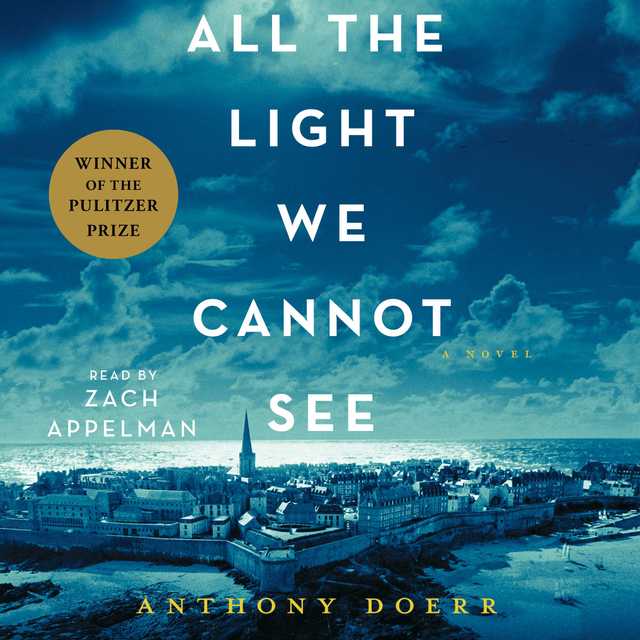











![The Demon Apostle (2 of 3) [Dramatized Adaptation]](https://speechify.com/audiobooks/wp-content/uploads/sites/29/2023/06/pr_eaudio_9781685086985_640px.jpg)
